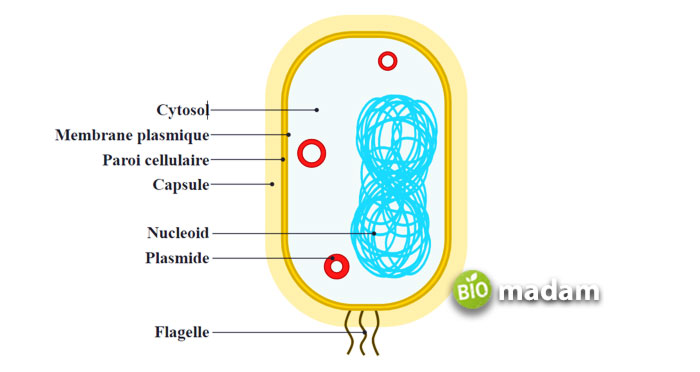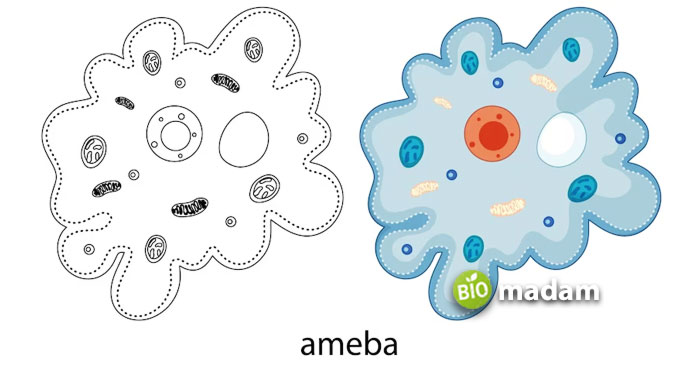The cell is the basic unit of the human body, comprising different elements that contribute to normal body anatomy and physiology. Most components of the cell are similar in the prokaryotic and eukaryotic cells. Cytosol and cytoplasm are also present in both. The cytosol is the liquid in the cell membrane and acts as the main site for biochemical processes. Whereas the cytoplasm is the component of the cell enveloped by the cell membrane.
Let’s tell you more about the differences between cytosol and cytoplasm.
Comparison Table
| Factors | Cytosol | Cytoplasm |
| Components | Dissolved molecules | Cytosol, organelles, cytoplasmic inclusions |
| Composition | Water, proteins, water-soluble ions | Water, cytosol, proteins, lipids, carbs, enzymes |
| Diversity | Low | High |
| Function | Molecule transport and signal transduction | Cytokinesis, and signal transduction |
| Reaction | Chemical reactions | All cellular activities |
What is Cytosol?
The cytosol is the matrix of the cytoplasm. It is covered by the cell membrane and spreads to the chloroplasts and mitochondria. The cytosol comprises intracellular fluids and has specific significance in living cells. It is a part of the cytoplasm in eukaryotes and surrounds the organelles. On the other hand, it provides a site for metabolic reactions in prokaryotes. Metabolic reactions in eukaryotes typically occur inside the organelles.

Composition
Majorly the cytosol in our cell is composed of water, molecules, cations, and anions. Around 70% of the cytosol’s volume is water containing dissolved 200,000 non-protein molecules. These molecules typically weigh less than 300 Da. Due to the high amount of water in the cytosol, the pH is between 7.0 and 7.4. Besides non-protein molecules, cytosol also contains proteins, carbs and nucleic acids.
Cytosol also contains cytoskeleton filaments, including actin filaments and microtubules. It often leads to the crowding of macromolecules in the cytosol. The cytoskeleton fragments modify the properties of the cytosol from an ideal solution. The movement of water into the cytosol takes place majorly through osmosis.
Function
The cytosol is mainly responsible for signal transmission from the cell membrane to the nucleus, which then acts accordingly. It also facilitates the transport of metabolites from one location to another within the cell. While smaller molecules move freely, larger molecules transport through carrier proteins. Prokaryotic cytosol is the site for metabolism. The cytosol (cytoplasm) of eukaryotes acts and plays a role in glycolysis, translation, and glucogenesis.
What is Cytoplasm?
The cytoplasm is a clear substance within living cells with a gelatinous consistency. It is surrounded by the cell membrane and plasma membrane, and contains every component within the cell. It is present between the cell wall and the nucleus. However, the nucleus does not contain the cytoplasm.

Composition
Since cytosol is a part of the cytoplasm, their composition is extensively similar. The cytoplasm has 80% water, molecules, and organelles such as mitochondria, endoplasmic reticulum, etc. Other organelles of plants include chloroplasts, lysosomes, and vacuoles. Substances like calcium oxalate, starch, and other liquid droplets suspended in the cytoplasm are called cytoplasmic inclusions. The cytoplasm may act as a sol-gel, sometimes as a thick gel, and as a thick liquid solution at other times.
Function
The cytoplasm is the main site for all the metabolic activities within the cell, as it contains all organelles. Thus, it provides the location for glycolysis, nuclear division through mitosis, and cytokinesis.
Differences between Cytosol and Cytoplasm
Definition
Cytosol
The cytosol is the part of the cytoplasm containing dissolved molecules.
Cytoplasm
The cytoplasm is the liquid part of the cell containing the cytosol and organelles.
Composition
Cytosol
The cytosol comprises water, types of proteins, water-soluble molecules, and soluble ions.
Cytoplasm
Conversely, the cytoplasm comprises 80% of water, cytosol, lipids, carbohydrates, proteins, enzymes, nucleic acids, and non-organic ions. It also contains organelles and cytoplasmic inclusions.
Variety of Components
Cytosol
Cytosol comprises a comparatively smaller number of molecules and ions.
Cytoplasm
Alternatively, the components of the cytoplasm are diverse compared to the cytosol.
Function
Cytosol
Cytosol contributes to molecule transport and signal transduction within the cell.
Cytoplasm
On the other hand, cytokinesis, signal transduction, and nuclear division occur in the cytoplasm.
Metabolism
Cytosol
The cytosol is the site of chemical reactions in prokaryotes.
Cytoplasm
However, the cytoplasm provides a location for all cellular activities like cell division and glycolysis.
The Bottom Line
Cytosol and cytoplasm are important elements of prokaryotic and eukaryotic cells. The cytoplasm contains all the organelles in the eukaryotic cell, including the nucleus. On the other hand, the cytosol is the site for metabolic reactions in prokaryotic cells. The cytosol comprises water, dissolved molecules, ions, and water-soluble molecules. The cytoplasm contains the cytosol, cytoplasmic inclusions, and cell organelles.
FAQs
What is found in cytosol?
The cytosol is made up of water, small molecules, dissolved ions, and large water-soluble molecules. Typically the dissolved substances weigh under 300 Da. It essentially contains everything besides cell organelles.
Is the cytoplasm located in the cytosol?
The cytosol is located in the cytoplasm. Other components of the cytoplasm besides the cytosol include the organelles and cytoplasmic inclusions. The cytoplasm has a highly organized structure due to the presence of diverse organelles.
Do all cells have cytosol?
Yes, all prokaryotic and eukaryotic cells have cytosol covered by the cell membrane. It is the jelly-like component of the cytoplasm with small and large molecules apart from organelles.

Hello, I would like to introduce myself to you! I am Chelsea Rogers, an experienced blog writer for science articles, holding an MPhil degree. My enthusiasm to grab the best knowledge, let it relate to botany, zoology, or any other science branch. Read my articles & let me wait for your words s in the comment section.

